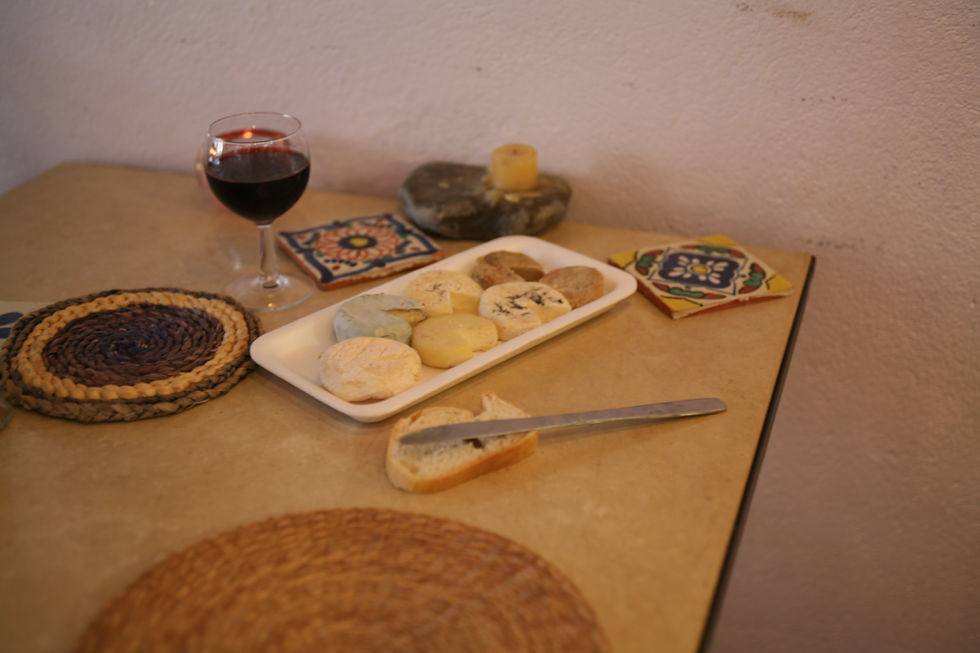(33) Ser Korycinski swojski, Polish PGI cheese.
- C Demeyer
- Mar 14, 2022
- 3 min read
To continue on the Polish theme, a PGI cheese from an area near Belarus (you know, the other country where democracy is a bad word).
Still described following the same principle, please find information below.

Lovely view, but I won't tell!
History
This cheese started life sometimes in the twentieth century, more probably in the second part of it, once population movement subsided. It is specific to this small area, an area rather poor with very low industrial output and a high proportion of grassland representing over one third of the total land.
Dairy farming with butter production and raw milk culture is the basis of living in this area, and it became evident that cheese production would start soon thereafter. This cheese won many awards at the turn of the millennium, and it gained PGI status in 2012.
Area of production
The area of production of Ser Korycinski Swojski is 3 municipalities, Janow, Korycin, and Suchowola, in Sokólski County, part of Podlaskie Province, in Poland. It is not far from the Belarus border and mainly agricultural with some forested areas.
It is made up of extensive plateaux with marshy depressions, a few valleys, and high plains with some outcrops at 200 meters of altitude. It is the coldest part of Poland, except for the mountains of the south, and the climate is continental with maritime influence from the Baltic Sea. The winters are harsh and long, lasting a third of the year, and summers are moderate with much rainfall, the rest of the water comes from winter snow which is abundant and frequent.
Production occurs for about two thirds of the year and the animals benefits from the environment at that stage, being confined in barns the rest of the year.
Method of production
The whole raw milk, unaltered in any way and used within 5 hours after obtention from the animal, is warmed up to body temperature of around 32oc and rennet and salt is added. Coagulation is achieved later on, and once the curd mass has set the whey is eliminated after being cut.
The curd is then moulded into a colander with frequent turning to achieve the desired form and consistency. When the correct firmness is obtained it is unmoulded and salted with direct application of dry salt all over. The cheese is then put into a correct environment for maturation.
The different versions are: “swiezy”, or fresh, which is matured for 2 to 4 days; “lezakowany”, or matured, is kept for 5 to 14 days; and “dojrzaly”, or ripe, is kept for more than 14 days. Each cheese should wear the PDI marking distributed by the Association of Korycin Cheese Producers; however, this is not obligatory as some producers are not members.
Look, feel, and taste
This cheese has a specific shape and can be made with different optional spices and herbs: pepper, chilli, basil, dill, parsley, lovage, mint, black caraway, wild garlic, caraway, paprika, marjoram, oregano, savoury and dried mushrooms, garlic, olives; some of these can be dried or fresh.
With 3 different maturing levels, it is more or less yellow on the outside and cream to yellow on the inside; the consistency is elastic depending on maturing and it is moist, stating wet and drying with age. There are many eyes well spread and evenly sized, from 1mm to slightly larger and it is very easy to cut.
The aroma is buttery to more acidic with age, and this is depending on the extra herbs and spices used.
Safe keeping
to be consumed within a few days depending on maturing, wrap in cheese paper delicately, and keep in refrigerator.
And remember, give life to your taste buds, and above all, enjoy real cheese.



Comments